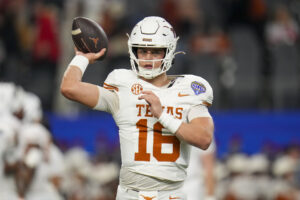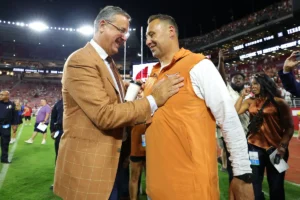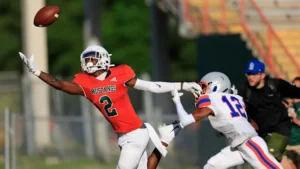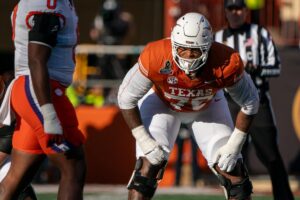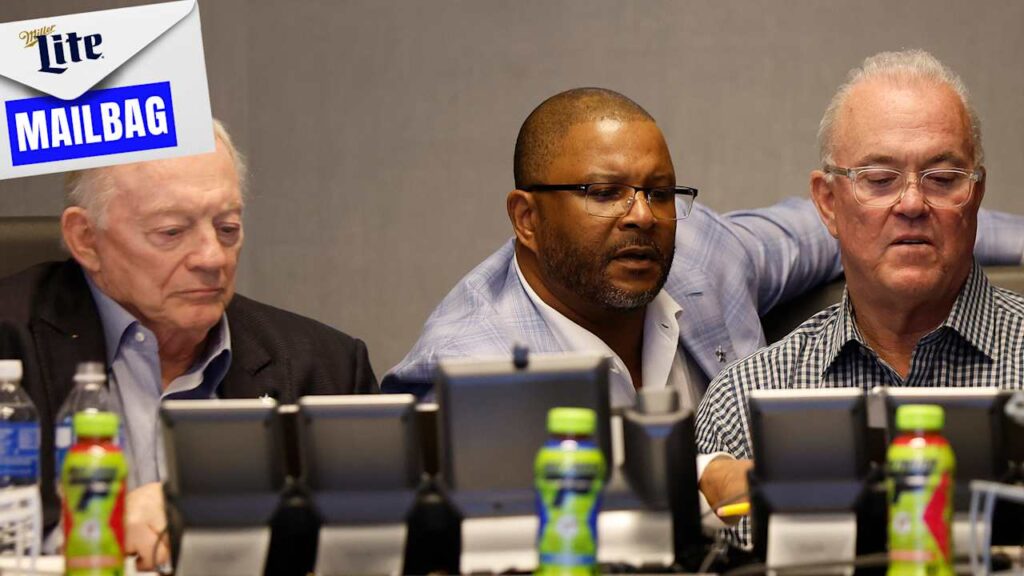
Dallas Cowboys Mailbag: Trade Down from No. 12 to Add Picks?
The Dallas Cowboys are once again at a crossroads as the NFL Draft approaches, holding the No. 12 overall pick in a class loaded with both top-end talent and enticing depth. It’s a familiar position for a franchise constantly trying to balance short-term success with long-term sustainability. As questions pile up in fans’ mailbags and front office war rooms alike, one of the most intriguing ones centers on the possibility of trading down. Could the Cowboys move back from the 12th spot in order to accumulate more draft picks, and is that the right move?
To unpack this question, we must first understand the dynamics of the 2025 NFL Draft and how the Cowboys’ roster and philosophy play into their draft-day strategy. Dallas, under Jerry and Stephen Jones, has long valued premium picks, but they’ve also been known to trade down when it makes sense—most notably in 2013, when they slid back from No. 18 to No. 31 and took center Travis Frederick while gaining an additional third-rounder. Though that decision was widely panned at the time, Frederick went on to become a Pro Bowl mainstay. That lesson looms large: the board can surprise, and so can draft strategy.
At No. 12 this year, the Cowboys find themselves in a bit of a no-man’s-land. It’s just outside the typical range for true “blue-chip” prospects but early enough that several players with elite upside could still be available. For a team with multiple roster needs—most notably on the offensive line, at linebacker, and in the secondary—this slot provides opportunity. However, the depth of the class in those particular areas makes the idea of trading down an appealing option. If the Cowboys can move back a handful of picks and still target a plug-and-play offensive lineman or an impact defender, they may be able to add a Day 2 selection or two that could fortify a roster currently walking a tightrope between contention and transition.
This year’s draft is particularly rich in offensive tackles, corners, and edge rushers—the kinds of players who can provide foundational help for years. If a top-three tackle is off the board at 12, Dallas could comfortably trade back, target the fourth or fifth-best tackle, and still come away with a Week 1 starter. Similarly, if they covet a linebacker like Edgerrin Cooper or Payton Wilson but don’t want to take them in the top 15, sliding into the 18–25 range could allow them to still get their guy while adding capital to address tight end, running back, or defensive tackle on Day 2.
From a purely strategic perspective, the Cowboys could benefit from the growing number of teams looking to trade up for a quarterback or wide receiver. If one or two passers slide unexpectedly and a team like the Raiders or Vikings gets antsy, Dallas could field some strong offers. The 12th pick becomes valuable not only for who they might select but for how badly another team might want to leap into that spot to secure a signal-caller. In that scenario, the Cowboys could add a 2025 third-rounder or even a future second, depending on how far they’re willing to slide down the board.
Of course, trading down carries risk. The most obvious one: missing out on a truly elite talent. If someone like Alabama cornerback Ga’Quincy “Kool-Aid” McKinstry or Oregon offensive tackle Ajani Cornelius is available at 12, the Cowboys must weigh whether passing on that level of prospect is worth the additional capital. The same applies to edge rushers or hybrid defenders like Jared Verse or Abdul Carter, who could be game-wreckers from Day 1. While Dallas has a solid pass rush anchored by Micah Parsons and DeMarcus Lawrence, adding a third wave of pressure from the edge could elevate Dan Quinn’s (or a successor’s) defense back into top-five territory.
There’s also a broader philosophical question at play here: are the Cowboys in win-now mode or preparing for a post-Dak Prescott reset? With Prescott entering a critical season in terms of contract and performance, it’s possible that Dallas is looking to straddle the line. A trade-down scenario could reflect a front office trying to collect enough ammunition to build around either Prescott one last time—or begin stocking the cupboards for life after him. Adding more picks doesn’t just give you more chances to hit on talent; it also creates more flexibility in future trades, whether for veteran help or upward mobility in a future draft.
Then there’s the consideration of draft history. The Cowboys’ track record in the first round has been solid—think CeeDee Lamb, Micah Parsons, and Tyler Smith—but their Day 2 and Day 3 selections have been far more hit-or-miss. Trading down to accumulate more mid-round picks only helps if you draft well in that range. If the scouting department isn’t sharp, those picks may end up being wasted opportunities. However, if Will McClay and his team can repeat some of their mid-round magic (like with DaRon Bland or Tony Pollard), then the benefits of trading down multiply.
Another factor to consider is how this decision impacts the locker room. The Cowboys have several veterans who are still playing at a high level and want to win now. DeMarcus Lawrence, Zack Martin, and Brandin Cooks don’t have many years left in their primes. Trading down for potential may not sit well with players who want immediate reinforcements. On the flip side, if the added draft capital is used wisely—either in a trade for a proven veteran or to fill multiple depth chart holes—it could reinvigorate a roster that has underachieved in the postseason.
Ultimately, this comes down to execution and circumstance. If the Cowboys stay at 12, they’ll likely have a chance to land a difference-maker—perhaps a corner like Terrion Arnold or a versatile lineman like Troy Fautanu. But if the board breaks a certain way and a team comes calling with an offer that includes a second and fourth-rounder to slide down eight spots, it may be too good to pass up. The Cowboys must trust their board and their scouts.
In a draft class like this, where talent stretches into the third round, the “volume over star” approach may make sense. Dallas has enough foundational pieces to remain competitive in the NFC East, but they’ll need to start hitting on the margins to make real noise in January. Trading down could be a key piece of that puzzle—especially if it means addressing depth issues that became glaring late in the 2024 season.
One sneaky benefit of a trade-down? Financial flexibility. First-round picks come with guaranteed salaries and cap implications. By sliding back slightly, the Cowboys could reduce the financial burden of their first pick, freeing up cap space that could be used for an in-season acquisition or contract extension. It’s a subtle advantage, but in a league where every dollar matters, it could tip the scales.
In conclusion, the idea of trading down from No. 12 isn’t just about getting more picks. It’s about finding the sweet spot between value and impact. The Cowboys have to be disciplined, flexible, and opportunistic. Whether they stay put or move back, what matters most is walking away from the 2025 NFL Draft with players who can help win games—and soon. Because for all the intrigue and hypotheticals, one truth remains: the pressure in Dallas never stops.

